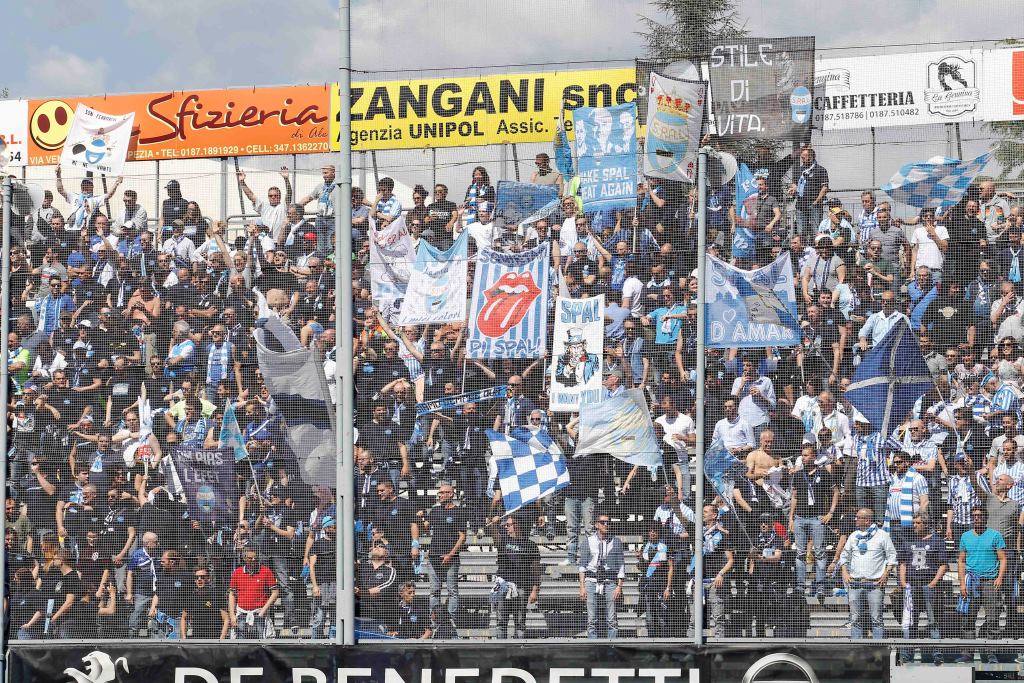49 years later, SPAL achieves once-unthinkable Serie A return
The fight against extinction is over. So are the days of semi-pro football. For this once-storied club from Ferrara, no number of bankruptcies could keep SPAL down.
Uncommonly known as Societa Polisportiva Ars et Labor, SPAL confirmed its unlikely return to Serie A on Saturday after promotion challenger Frosinone's unexpected loss to Benevento.
It has been 49 years since this city could look forward to premier football, and yet it has been a whirlwind of success over the past five seasons - including back-to-back promotions from Lega Pro - which resurrected SPAL.
Serie A #spal pic.twitter.com/jy56dotw5h
— francesco pellegrini (@francescopelle4) May 13, 2017
Refounded three times since 2005, SPAL slaved away in the fourth tier. It was only a merger with local side Giacomense in July 2013 which saved SPAL, established in 1907 by a local priest, from oblivion. The team that gave us Fabio Capello, a team with 21 years of Serie A memories and experience, was that close to extinction.
Mayor Tiziano Tagliani intervened at that point to find a suitable owner. Several businessmen came and went, none able to ensure SPAL's future, all leaving debts behind.
Then Francesco Colombarini and his son Simone, local producers of fiberglass, offered to step in. From the province themselves, they made both a financial and emotional investment.
"We live in Ferrara," Simone told La Nouva Ferrara in July 2013. "We don't want to give a bad impression!"
As the previous owners of Giacomense, the Colombarinis kept a low profile and, instead of making grand statements of intent like ambitious and bombastic Venezia owner Joe Tacopina, they preferred to work quietly toward realising a once-unthinkable objective.

Even in Serie B, SPAL has operated on a relatively modest €8-million budget compared to others in the division, according to local newspaper Il Resto del Carlino. A competent strategy based on a blend of youth and experience has allowed SPAL to thrive.
No other Serie B club boasts an all-Italian squad. Every one of SPAL's 27 players are from the peninsula, posting an average age of 25 years. Goalkeeper Alex Meret and centre-back Kevin Bonifazi, both 20, have already received calls to train at Italy's base in Coverciano, while veterans Sergio Floccari and Mirco Antenucci have spearheaded a prolific attack.
But remnants of Giacomense, the club that sacrificed itself, remain driving forces in SPAL's revolution.
Manuel Lazzari, who began his career with the now-dissolved regional side, has become ever-present in SPAL's lineup, scaling the divisions since unification in July 2013. A right-winger, Lazzari has made more than 100 appearances for SPAL and drawn interest from Sassuolo and Udinese.
Nothing would have changed without club president Walter Mattioli, Giacomense's chairman for 25 years, and Davide Vagnati, at 38 years old one of the youngest sporting directors in Italy.
A former accountant, Mattioli has crunched the numbers, and fostered a close relationship with locals. Vagnati said he has travelled at least 60,000 kilometres a year to unearth hidden gems.

But without manager Leonardo Semplici and his forward-thinking tactics, SPAL's ascent may not have been so quick.
Following in the footsteps of Massimiliano Allegri and Maurizio Sarri, who both made their way up from the lower leagues, Semplici began his journey with SPAL in the third tier. Appointed in December 2014, he brought with him experience as a coach at Fiorentina's academy, where he educated promising winger Federico Bernardeschi.
Semplici, who has reportedly drawn interest from Sassuolo, has fit his players into a 3-5-2 formation and demanded goals from them. It's no surprise SPAL's 64 tallies rank the highest among Serie B teams.
SPAL's success has inspired sellouts at the soon-to-be-expanded Stadio Paolo Mazza, which will see an increase from 8,000 seats to 16,000 by 2018. It has attracted the bright lights and microphones of popular Sky Sport reporter Gianluca Di Marzio, and brought attention back to Ferrara, where city tourism is growing. Even Capello, who played for SPAL's last Serie A side back in the 1960s, returned to see his former colours earlier this season.
Capello's sale to Roma in 1967 actually covered the costs of SPAL's early facilities, which only recently got the upgrades they needed.
But the club doesn't need to sell players anymore. It needn't worry about covering debts or offsetting outstanding debts and unpaid wages.
The fight against extinction is over. The fight to stay in Serie A begins.
(Photos courtesy: @spalferrera)
HEADLINES
- FIFA offers to meet players' union, leagues after fixture congestion fury
- Serie A preview: Atalanta jubilant, Roma dejected after European endeavors
- Permutations in Europe: What's still at stake in final weeks of season?
- Leverkusen strike late to extend historic unbeaten run, reach UEL final
- Atalanta heading to 1st-ever European final after beating Marseille